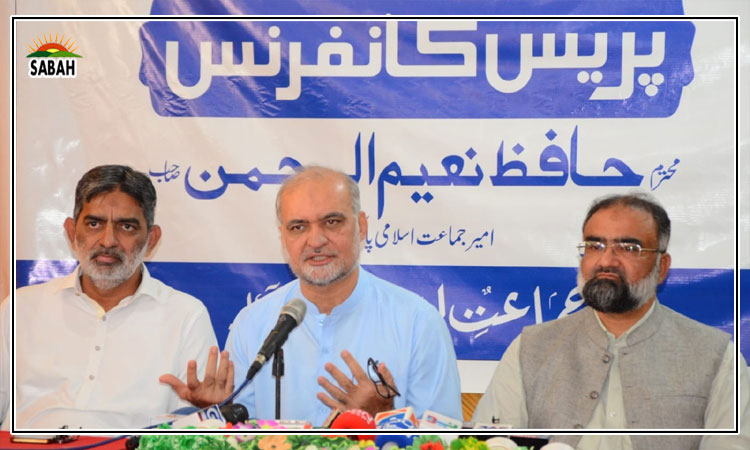As of 2019, 23.1% of the deliveries in Pakistan happened through C-section: Gallup Pakistan
ISLAMABAD, July 12 (SABAH): In 2019, 22.7% more women who had received higher education (45.8%) and 20% more of those in the highest wealth quintile (43.1%) got a C-section than the national average of 23.1% – National Institute of Population Studies statistics released by Gallup Pakistan.
Gallup Pakistan, as part of its Big Data Analysis initiative, is looking at C-sections statistics among women in Pakistan. This data is part of a dashboard hosted by the ‘National Institute of Population Studies’.
The current edition looks at data from National Institute of Population Studies Dashboard, which can be found HERE)
What is the Big Data Analysis Series by Gallup?
Gallup Pakistan’s Big Data series was started by Bilal I Gilani, Executive Director of Gallup Pakistan. Bilal explains the rationale of the series: “The usual complaint from academics and policy makers is that Pakistan does not have data availability. Our experience negates that. Pakistan has lots of data, but it is not available in a usable form and not widely accessible. At Gallup we plan to bridge this gap in terms of accessibility and use of data. The Gallup Big Data series has earlier worked with data sets such as PSLM, Labour Force Survey, and Economic Survey reports as well as National Census Reports and Election Commission Data sets. The current series is using the National Institute of Population Studies Dashboard, which provides a variety of maternal health statistics. We hope that these series are useful, and we welcome both feedback as well as possible collaborations as we create a public good in the form of useful data sets in Pakistan.”
What data points this current edition covers:
This series aims to present the important learnings from the National Institute of Population Studies Dashboard, for policy makers, the public, as well as for marketers in an easy and understandable way. This edition looks at C-section statistics among women. The series’ main aim is to provide data. Implications of these data points for development sector as well as wider socio-political ramifications is something we would like to trigger in relevant circles.
Today’s topic is “C-Sections Among Women in Pakistan” from the National Institute of Population Studies Dashboard
Ever-married Pakistani women between the ages 15-49, who had given birth to at least one child, were asked, “Was (NAME) delivered by caesarean, that is, did they cut your belly open to take the baby out?” for their last and next-to-last birth – Pakistan Demographic Health Survey 2019
Key Findings:
Provincial breakdown: As of 2019, 23.1% of the deliveries in Pakistan happened through C-section. A provincial breakdown reveals that one in three (30.7%) births in Punjab happened through C-sections, which was 7.6% higher than the national average.
Wealth quintiles: 43.1% of women in the highest wealth quintiles delivered through C-section. This is 20% higher than the national average, and a significant 35.1% higher than C-section births recorded in the lowest wealth quintile.
Education level: In 2019, women who had received higher education were 22.7% more likely to get a C-section (at 45.8%) than the national average of 23.1%.
Mother’s age at birth: A quarter woman (24.3%) who gave birth between the ages of 20-34 had their delivery through C-section. This is 9% higher than women who were aged less than 20 at the time of birth (15.3%).
Birth order: Most women got a C-section delivery for the birth of their first child (32.3%), 9.2% higher than the national average.
Wish to Contribute to Gallup Big Data Analysis?
Gallup Pakistan is looking for collaboration with researchers to expand both the Big Data Analysis project as well as this study of Maternal Health in Pakistan. If you have any ideas, please write to Bilal I Gilani, Project Director, Big Data Analysis at Gallup Pakistan.
Wish to know more about the National Institute of Population Studies Dashboard?
NIPS is a premier research organization established by the Government of Pakistan since 1986 and currently, it is working under umbrella of the Ministry of National Health Services, Regulations & Coordination (NHSR&C). The NIPS has been mandated to act as a technical arm of the Government for undertaking high quality research and to produce evidence-based data, information for utilization by the Public sector and others agencies for policy formulation, strategic planning and making reference in the spheres of demography, population & development and health.
You can find more information on the Provincial Census Report Punjab, and complete tables, on https://nips.org.pk/
CLICK HERE TO ACCESS THE DETAILED REPORT
For more survey data, see website www.gallup.com.pk
Disclaimer: Gallup Pakistan is not related to Gallup Inc. headquartered in Washington D.C. USA. We require that our surveys be credited fully as Gallup Pakistan (not Gallup or Gallup Poll). We disclaim any responsibility for surveys pertaining to Pakistani public opinion except those carried out by Gallup Pakistan, the Pakistani affiliate of Gallup International Association. For details on Gallup International Association see website: www.gallup-international.com
Disclaimer: The views and inferences expressed in the article are that of the author himself and Gallup Pakistan does not take any responsibility in this regard. This series, and many such initiatives, are internally funded by Gallup Pakistan and Gilani Research Foundation. No outside country or local funding has been received for this current activity.












